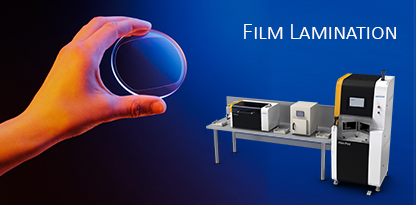Satisloh shifts coating paradigm with new technology


The new film lamination process overcomes the challenges of adding in-house coating: needed space; large investment; and highly skilled staff. With a plethora of benefits, the new technology changes the way labs approach hard and AR coating.
“We asked ourselves how we could make it easier for labs to add coating to their production. And film lamination was the answer. It’s a truly groundbreaking, unprecedented technology – enabling virtually any size lab to keep the entire value chain in-house,” said Andy Huthoefer, VP Product Management & Marketing. “We’re very excited to see this technology revolutionizing coating as we know it.”
This new technology produces coated lenses in just 15 minutes per pair, incredibly faster than conventional coating. Satisloh Tech-Film AR, a pre-fabricated, all-in-one, multi-layer film that replaces several coating consumables by combining multiple coatings and a bonding adhesive, laminates in a few easy steps. The process starts after surfacing when the Satisloh Hydra-Film cleans the lenses for perfectly clean surfaces, which are then plasma treated in the tabletop Plasma Etch for excellent Tech-Film adhesion. The actual lamination is a two-step process in the Satisloh Film-Pod:
– Thermoforming Tech-Film to the shape of the lens back curve.
– Permanently bonding the film to the lens.
“Laminated lenses aren’t just coated, they can be ground up to 40% thinner for better cosmetics — which the end consumer will love. And they’re 18 times more impact resistant than traditionally coated lenses compared to FDA standard requirements,” said Huthoefer. “And we’ve eliminated optical imperfections like Newton Rings which occur with non-index matched hard coatings.”



